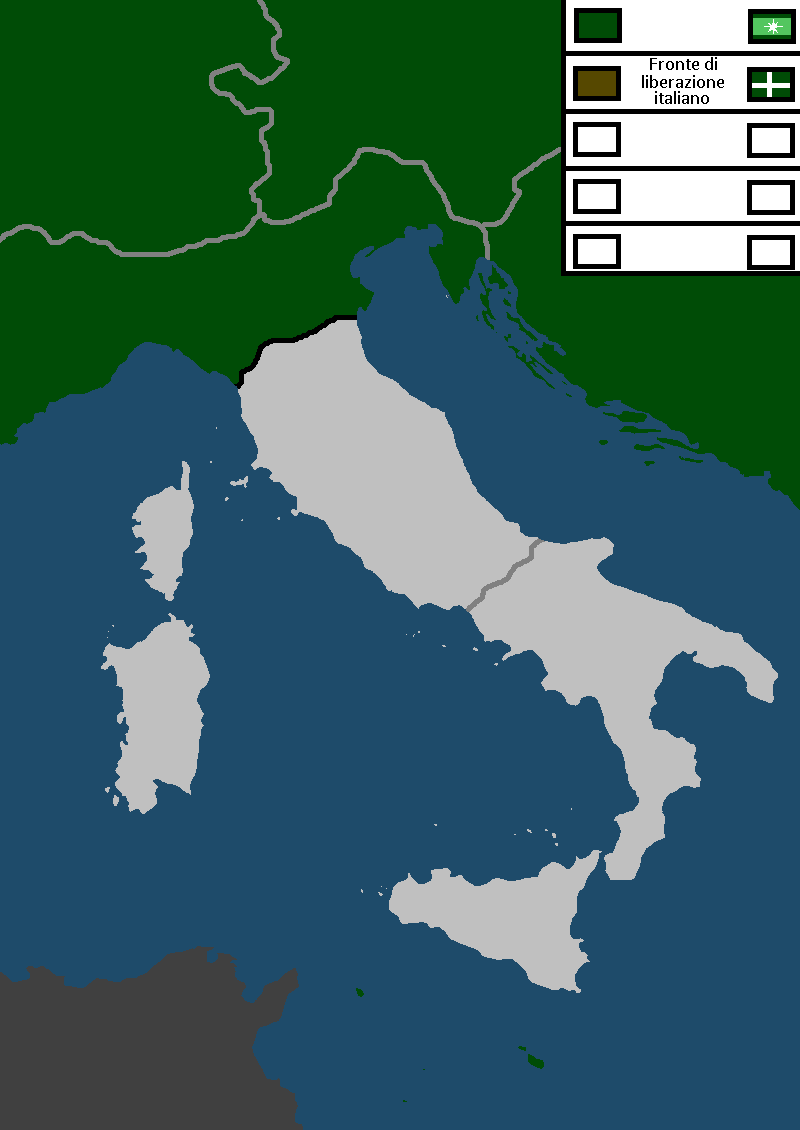Yetian-Italian War
| Yetian-Italian War | ||||
|---|---|---|---|---|
 | ||||
| Video | https://www.youtube.com/watch?v=Xd_D9exu35c | |||
| Date | 109 CE | |||
| Location | Europe | |||
| Outcome | Yetian Victory | |||
| Major Battles |
| |||
| Combatants | ||||
| ||||
| Commanders | ||||
Italian Campaign
After a long time of wishing to join the rest of Italy, a largescale revolt broke out in the Yetian province of Greater Venice as the 'Italian Liberation Front' rose up in rebellion. Angered by the lack of Italian support for this uprising and recent issues with corruption, a uprising occurred in the city of Rome as 'Revolutionary Rome' was proclaimed in opposition to the government of the Autonomous Republic of North Italy. The functions of the entire Italian government were greatly disrupted by this, leading to the national Italian government intervening and beginning to consider various solutions involving force, prompting the Revolutionaries to launch a march on the North Italian provisional capital in Bologna, where it executed most of the North Italian leadership, leading to it falling under the rule of the Minister of Education. The Italian government sent soldiers to fight off the revolutionaries until the Revolutionaries exposed just how destructive North Italy's corruption was, as funds were embezzeled even during war-time famines. The Italian government was disgusted by this and switched sides to the Revolutionaries, soon leading to the North Italians being crushed as their last stronghold in Cagliari fell, leading to the 'Autonomous Republic of Rome' emerging as an autonomy within Italy.
With Italy restabilised, it decided to intervene in the Italian uprisings in Yetia by actively supporting the ILF, launching invasions into the region in order to support them. Yetia reacted harshly to this and launched an invasion of Italy, only for its advances to be cut off by the ILF, leading to significant losses for Yetia. Despite being previously encircled, further Yetian forces began pushing in on Italian positions. Italy began asking for international aid from factions such as the New Axis Powers, though none of their members were willing to do so despite Yetian naval invasions gravely threatening Italy's sovereignty. Italy began recruiting more generals to fight the Yetians, allowing them to launch a effective counteroffensive in the south while the northern front was held.
European Campaign
As Italy was now fully secured into the fight against Yetia, the war expanded into a europe-wide conflict as Ireland and England in Exile aligned themselves with the Italian cause to fight against Yetia, allowing fighting to begin across more regions as Italy pushed outwards once more while Irish forces landed in Yetian England. Italy positioned larger armies on the east and west of its front as it didn't expect significant fighting in the Alps, while Ireland's were divided quite equally to combat the much thinner Yetian positions in England. Major fighting broke out in southwest England as England was crushed in the Battle of Plymouth while Rome weighed its options for where to strike, leading to it launching a diversionary attack into the city of Venice while it prepared to cross the Rhone river in the west. While the Romans saw significant success in surrounding and destroying a major Yetian army, Ireland saw massive defeats as it was largely forced to withdraw from Yetian territory. Yetian reserves began to be mobilized to combat the Romans as they marched towards Newtown, surrounding much of Yetia's marines in the city of Barcelona in the process. As a stalemate set in on the main front Yetia began operations against Ireland, occupying the Isle of Mann. Rome prepared a new army and broke through open areas of the Yetian front as it marched thru the Garonne and cut off Iberia, while in the east Catanian-backed ILF partizans seized Istria. Yetia launched a surprise invasion of Ireland, swiftly overwhelming the Irish forces as they retreated deeper into their island. Fighting intensified in Iberia as Roman forces broke through the weaker Yetian defences and entered Newtown.
Ireland continued facing issues as nearly half of its mobilized forces were encircled and destroyed by Yetia, leaving only a few smaller Irish and English armies operating in the fringes of Ireland until they were destroyed.. Rome continued seeing success as it marched deeper and deeper into Iberia. Yetian forces in Iberia were thrown into chaos as local revolutionaries proclaimed the 'Republic of Andalusia', which Yetian forces needed to move to crush at the expense of falling back. Ireland's defeat quickly proved to be a significant issue for the Italians, as Yetian armies began swarming them from all directions while the Italian and Roman armies desperately tried to escape. The Italian central government proved to be very inept in times of crisis due to its lack of knowledge in how to deal with the situation as their armies were pushed back across the Rhone, leading to them unsuccessfully trying to recruit Choros to their side which failed due to it effectively being a Yetian puppet. All of a sudden, a coup began in Yetia as the House of Yetevia-Anssen and Yentevia cooperated to overthrow the republican Seventh Commonwealth, swiftly securing the loyalty of the military and forcing the government to flee into exile after a series of brief battles. Despite seemingly leading towards a path of peace, the Eighth Kingdom of Yetia sent an ultimatum to the Italians demanding their surrender, which when ignored prompted Yetia to begin a invasion of Italian core territory. Seeing the situation as hopeless, Italy surrendered on terms that it pay 5 Billion Y$ in reparations and allow Yetia to occupy significant portions of its territory, forcing Rome to relocate its government to Cagliari.